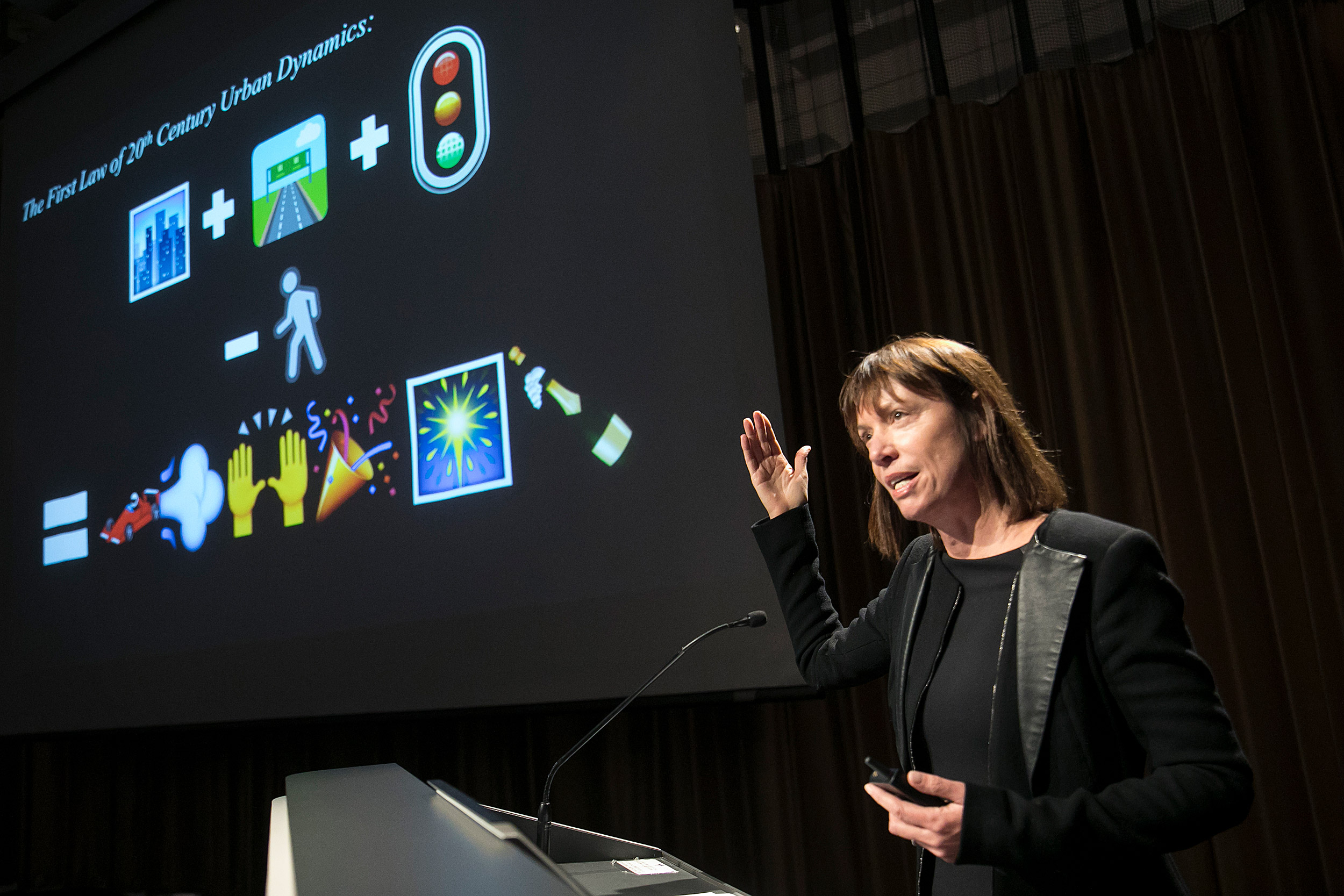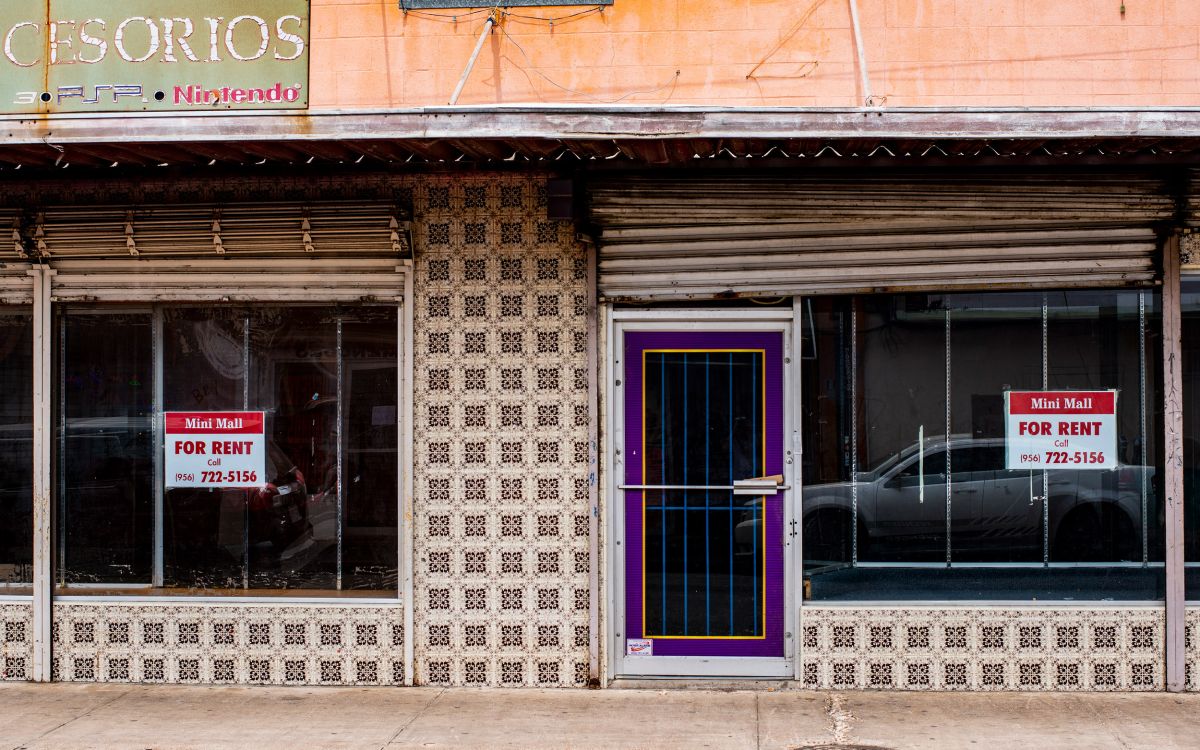
Janette Sadik-Khan speaks Thursday at Gund Hall.
Jon Chase/Harvard Staff Photographer
Street battle
Transportation expert Janette Sadik-Khan advocates agitating for more pedestrian-friendly spaces
“Streets are what make some cities great, and some cities not so great,” Janette Sadik-Khan told a capacity crowd at Gund Hall at the Graduate School of Design Thursday evening.
The problem, explained Sadik-Khan, an authority on transportation and urban transformation and the former transportation commissioner of New York City, is not so much the actual asphalt as who uses it — more specifically, for whose use it was designed. That focus has changed drastically over the past 100 years, Sadik-Khan noted, illustrating her point with photos of the intersection around Boston’s South Station from the early 20th century and today.
“Streets used to be really lively places for people,” she said, “but in the last century they’ve become places for cars.” As a result, “we’ve got congested streets, lifeless streets.”
Sadik-Khan discussed how urban thoroughfares can be — and have been — reimagined, first for private automobiles and now, increasingly, for pedestrians, cyclists, and public transport. For illustration, she reviewed her work from 2007 to 2013 under Mayor Michael Bloomberg, which is chronicled in her book (written with Seth Solomonow) “Streetfight: Handbook for an Urban Revolution.” As transportation commissioner, Sadik-Khan, who had earlier served as a transportation adviser to Mayor David Dinkins, ultimately helped implement PlaNYC, a comprehensive program for urban sustainability that had been spearheaded by the city’s deputy mayor for economic development, Dan Doctoroff. Under Sadik-Khan’s leadership, the city created nearly 400 miles of bike lanes as well as pedestrian plazas, bus lanes, public seating, and maps, and improved walkways and crosswalks, all of which increased pedestrian safety and usage and, ultimately, made for a more usable, people-centered city.
Some of the changes Sadik-Khan outlined were relatively simple. For one early project, for example, the city’s Department of Transportation took over Brooklyn’s Pearl Street Plaza. By painting the pavement green to set it off from the surrounding streets and bringing in planters and umbrellas, the department turned what Sadik-Khan called “an underused parking lot” into an inviting outdoor public space. At times, not even that much effort was needed. Within hours of closing off Broadway just north of the Flatiron Building at 14th Street, Sadik-Khan recalled, art students were sitting in the road, sketching the buildings from a street-level perspective. (Photos of these projects and others illustrate “Streetfight.”)
“By showing what was possible, we built up an appetite for what people could imagine and ask for,” she said.
These innovations were not without pushback. The opposition to the city’s bike-share program, Citi Bike, was so strong that it prompted what Sadik-Khan dubbed a “bikelash,” with a critical Wall Street Journal columnist referring to “the all-powerful bike lobby.”
The bike-share program was ultimately defended by celebrities such as Jon Stewart and has grown to become overwhelmingly popular. At Harvard, Sadik-Khan used the attacks as an opportunity to teach strategy. She said the key to overcoming such adversity is building relationships with the people who actually use the streets. She talked about how partnering with groups like Boston’s LiveableStreets Alliance enabled change in New York.
“A city that is looking to do big things will always have a push-pull relationship with communities, and building those relationships with communities is more important than anything you put down in concrete, asphalt, or steel,” she said. “It is years of the hard work of advocates that got us to the point where we are today.”
Sadik-Khan advised those pushing for change to engage with authorities as much as possible. “I made it a point to have breakfast or lunch every few months with the police commissioner,” she said. “You have to build relationships at the agency level.”
The payoff, she said, is worth it in that reimagined streets can result in a more livable and more profitable city. For example, retail is measurably up on streets that are now more hospitable to pedestrians and cyclists — by 49 percent in one case study Sadik-Khan cited. Traffic-related injuries and fatalities are also measurably reduced.
Praising Boston and Cambridge, as well as surrounding cities such as Somerville and Arlington, for adopting modifications like bike and bus lanes, Sadik-Khan said the area is a leader in urban transformation. Many of the questions following her talk focused on local issues, such as making Harvard Square more pedestrian-friendly. To aid such efforts and propel them further, Sadik-Khan again emphasized local activism and involvement, encouraging participants to push for changes — even small ones — that will help people visualize what is possible.
“The bottom line is that it’s not a question of engineering, it’s a question of imagination,” she said. “It’s a fight to make space for people — a street fight. It’s a fight we can win and a fight we must win because when you change the street you change the world.”







